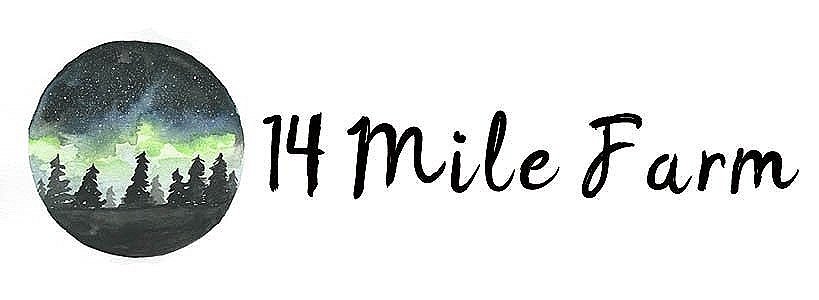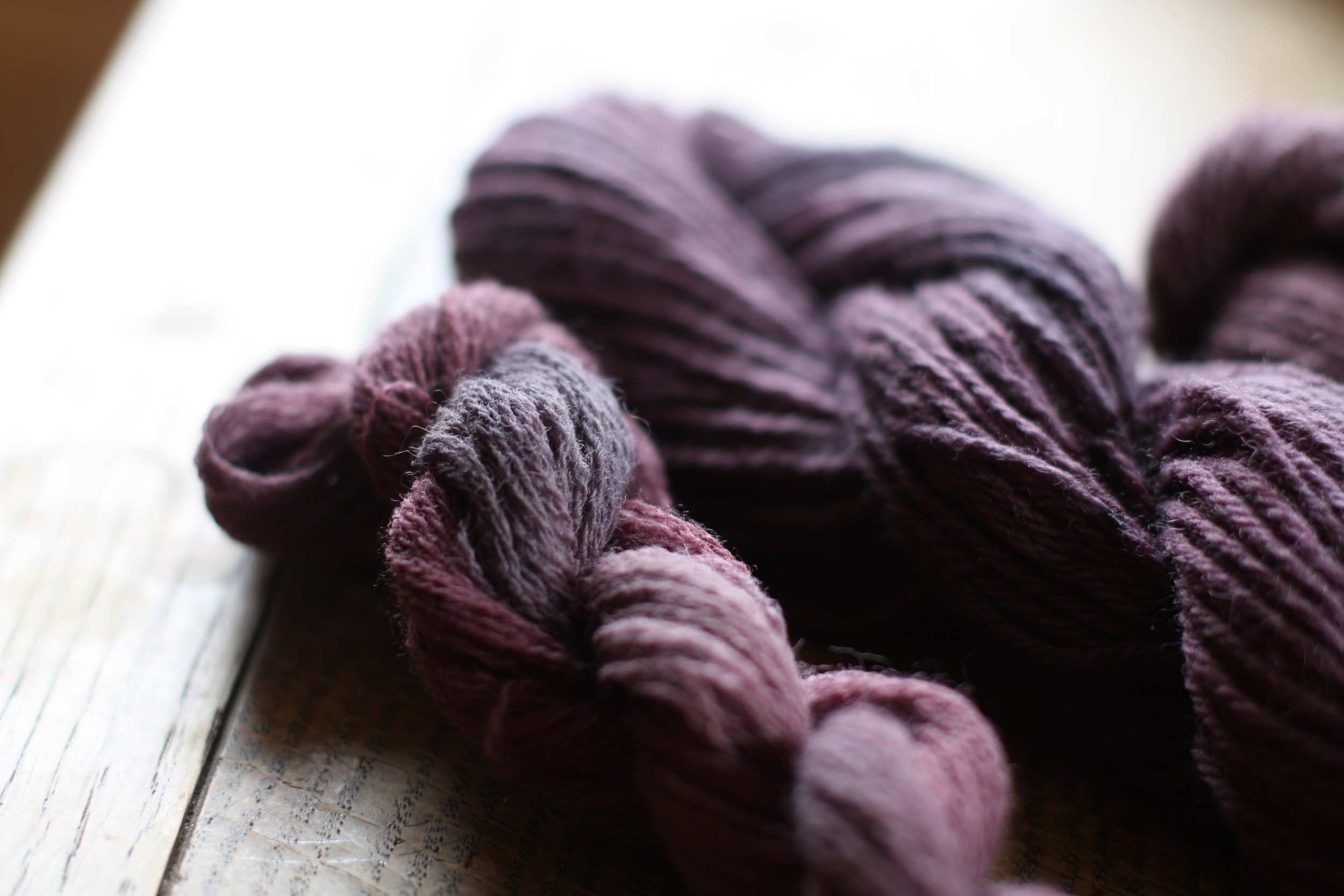Welcome! Please feel free to subscribe to the newsletter to get studio updates and projects from the archives straight to your inbox.
Natural Dye Experiments
Every year, my local weaving guild plants and tends and harvests a dye garden at the University's botanical gardens. Every year at the end of the summer, the guild hosts a dye day from the plants they've grown. For one reason or another I've never made it to the dye day, though I've put in some hours weeding the garden from time to time.
This year, I made it as far as mordanting* the wool to dye, and when life intervened and I missed the event, I was left with nearly two pounds of mordanted wool on my hands. What to do? Why, go to the woods of course!
I wrapped my berry pie baby up on my back and she reached over my shoulder as I harvested a pot full of rosehips, another of alder cones and leaves, another of yarrow. We pulled chaga** from the cupboard - I never do seem to make tea out of it as I intend to - and put that to boil as well. My husband brought home some chokecherries from a red barked Canadian chokecherry tree that grows on campus.
As I simmered the plants and then simmered the wool in their dyebaths, first my kitchen and then my whole house began to smell delightfully of the woods. It was a few-day process of stirring, soaking, simmering, and cooling the wool during which I thoroughly felt myself inhabiting the archetype of the witch in the woods. I loved every minute of it.
The rosehips yielded the most delicate neutral with a hint of rose gold. The alder gave me a lovely beige, the chaga a deep antique gold. And the chokecherry gifted me with the loveliest purple I have ever seen!
So now I have a pile of naturally dyed skeins with which to play! I dyed three different wools - a quite fine laceweight, one that is perhaps fingering weight, and a partial cone of 100% Shetland wool that is a little thicker than the one and a little thinner than the other. I'm anticipating cowls on a warp or two this winter and I'm quite tempted to put some on a tapestry loom as well.
I'm looking forward to next year's dyepots!
*Mordanting is a process of treating wool (and/or other protien fibers) to prepare it to take color from naturally found sources (plants, fungi, etc). It is an archaic word that happen to adore. One of the most common mordants, and one of the safest, is alum which is a mineral salt. I was unhappy with one of the dyebaths that I ended up experimenting with. I took those skeins and overdyed them. Some I re-mordanted and some I did not. The difference was quite striking! The skeins that had been re-mordanted for the second dyebath took the color so very much better.
**Chaga is a wild fungus that can be found growing on birch trees which has medicinal effects in both an infusion and/or decoction (water extraction) and a tincture (alcohol extract).
Dyeing a sunset Sky
This is a sneak peek of what is going onto the loom next. I've absolutely fallen head over heels in love with dyeing yarn. The results are not always quite what you imagined they would be, but so far in my experience, they're always delightful.
So much of weaving is a meticulous craft. There's lots of math involved. Attention to detail. Consistency.
But dyeing? It is like painting. I get to place the colors as I will, in real time, as inspiration strikes.
It is still slow art, plant fibers have to batch for 24 hours and you don't really see the colors they will end up as until they've been rinsed and dried. This particular set of skeins had me a little terrified, being already colors outside my comfort zone and then also appearing much brighter and darker before rinsing and when wet. But they're growing on me! I can't wait to see how they'll weave up!






























